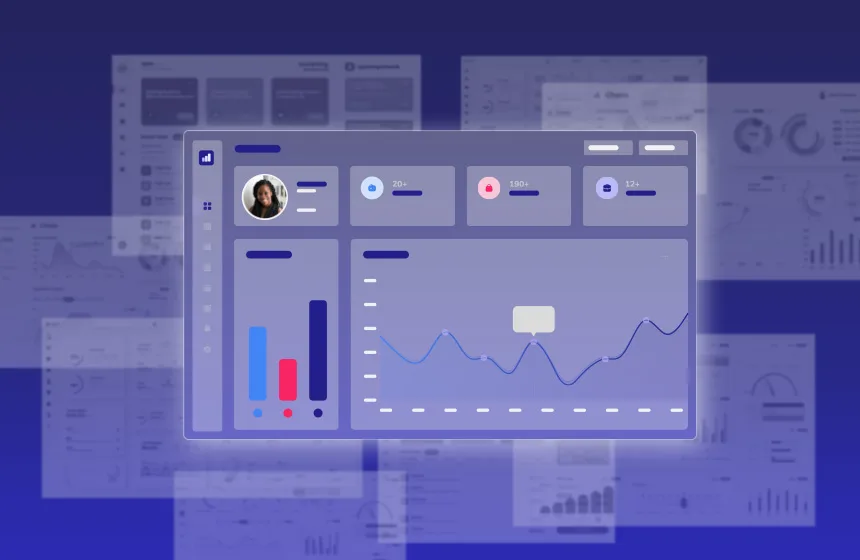Accelerate deals and increase win rates with the leading enterprise AI demo platform.
How to Sell SaaS to Modern B2B Buyers

October 19, 2025
Table of Contents
If you’re still selling SaaS using best practices from 2012, you’re pissing off your buyers.
And you’re missing the opportunity to get ahead of everyone else in your field.
Reprise co-founder and COO Evan Powell and Rudina Seseri, founder and managing partner of Glasswing Ventures, gave a super inspiring talk about how to sell SaaS today—and it’s definitely not the way it was being sold a decade ago. Here’s an overview of their discussion.
The Way We Buy Software Has Shifted Significantly
I’m deliberately using the term “we” here because that’s a big part of the shift. A decade ago, most of us had never bought a SaaS product in either the B2B or the B2C world. But in 2022 and beyond, we likely do it in both realms quite frequently, from Netflix to Spotify to Slack.
And that level of comfort means that how buyers want to buy now is very different.
Buyers spend 45% of their time in the buying process researching independently, and only 5% of their time is spent with a sales rep. Today’s buyers are educated, independent and sophisticated—the sales rep is no longer their trusted advisor and guide.
And companies aren’t keeping up with this shift in buyer expertise. 77% of B2B buyers say their latest purchase was very complex or difficult, according to Gartner.
B2B companies need to start thinking about the entire process and architecting their organizations and GTM around the buyer’s needs. Companies that figure this out will win over the next decade.
Your current and potential investors are noticing not just what you’re building, but how you’re taking your product to market.
You need to:
- Dissociate ARR growth from headcount
- Reduce sales cycles
- Lower customer acquisition cost
- Minimize churn
But the biggest shift for SaaS businesses that want to succeed is a mindset one.
You’re not selling anymore.
You’re enabling your customers to buy.
Your competitors today are selling how your customers want to buy, not just what: 91% of B2B SaaS companies are planning to invest more in PLG initiatives.
So how can you help your organization make this mindset shift? It isn’t easy, and it takes time, but the results are well worth it. Here are the three critical teams in this adjustment process.
Marketing
Your website is the first interaction most of today’s buyers have with your company, but they’re increasingly bouncing. In fact, the average website-to-lead conversion rate in SaaS is under 2%.
It’s because your site is likely designed for those inexperienced buyers of 2012, not 2022’s savvy and impatient prospect. Here’s what to do on your website instead.
- Make the first interaction with your customer your product. Within the first 15 seconds of arriving on your site, your visitor should clearly understand what you’re doing and how you solve problems like theirs. Plus, show them it’s actually a joy to get ROI from what you provide, not a chore.
- Put resources, especially your product, everywhere you can. Splash them across your website and your social channels. Make sure they’re not fluff but in-depth pieces: “here’s how the problem gets solved and how you can do this yourself.”
PLG isn’t all freemium models either. We’re talking about those same principles for everyone – buyers are looking for the experience of what it’s like to use your product, whether it’s in a free trial, freemium, or a little snackable interactive product demo.
Sales
Nobody reading this blog post is thinking, “I really want to fill out a form and sit through 20 minutes of answering 20 questions with a sales rep just to get a demo a week and a half from now.” This is why the discovery call is dead, and the biggest problem sales need to solve right now.
Many salespeople are too attached to the concept of give to get—we think prospects need to give us information to get access to the demo. It’s how we were trained, but it needs to be flipped on its head now. We need to give them what they showed up for (a demo), and then we will get information in return.
We’re not saying don’t do discovery, just don’t do a half-hour call where you rattle off questions at someone who is thinking of giving you money. Instead, do discovery through the demo.
Another issue is that buyers today are wary. They’ve been burned by bad purchases before, and they’re not putting you in the room with decision-makers now.
You need to empower champions instead of asking for (more) meetings. Your champion can be your sales rep. Enable them with a demo leave-behind that’s on the rails so it runs itself (no one-page pdfs no one will read please), make it interactive, and you’ll help make them the heroes.
Buyers trust hands-on experiences more than they trust you or your content, and way more than what you say to them as a salesperson. Help your product to speak for itself and everyone will win.
Product & Engineering teams
This new paradigm around how products are being bought is incorporated into the product teams as well.
How about viewing sales as a core strategic piece of your product design? Great UX/UI were differentiators in 2012 but they’re table stakes today. Do not send sales and marketing an MVP and a list of features coming on the roadmap—none of your prospects will believe it. Buyers have been burned by this move before and will head to a competitor.
In product, it’s easy to think of users as customers—people who have paid and are trying to get something out of the product. But we also need to be incorporating the prospect into our user group. Think about more than just what it’s like to use the product, but what is it like to see the product for the first time. Does it make people excited, does it make them want to go out and buy it? That’s where the product design process must begin now.
And how about understanding customers’ needs with data? In this day and age, you can incorporate features that tell you how users and prospects are engaging with your product.
Why should you rely on what someone says when you can know what they actually do? Figure out your features and don’t innovate in isolation or rely only on other teams for this information—create a feedback loop so you know how people are using what you build.
You should also listen to the way your customers describe their problems before they become customers. Is what your product does obvious to someone who doesn’t know it and that it will solve their needs? Listen to sales calls and listen to how prospects are describing their problem, and see if your newest feature will clearly solve this for them. With the rise of product-led growth, product teams need to be thinking of their products as go-to-market assets.
How Do You Want to Buy Software?
When you’re buying software, how do you approach the process? Do you love it? If you were the buyer, would you enjoy buying your own product? If not, you’ve got your work cut out for you.
Reprise can help you tackle several of these tasks: making it easy to show interactive demos of your product throughout the sales cycle, telling better stories about what your product does, and letting the buyer take charge.
We’re excited to enable the sales process of today. Take a tour today and see for yourself! No login required 🙂






